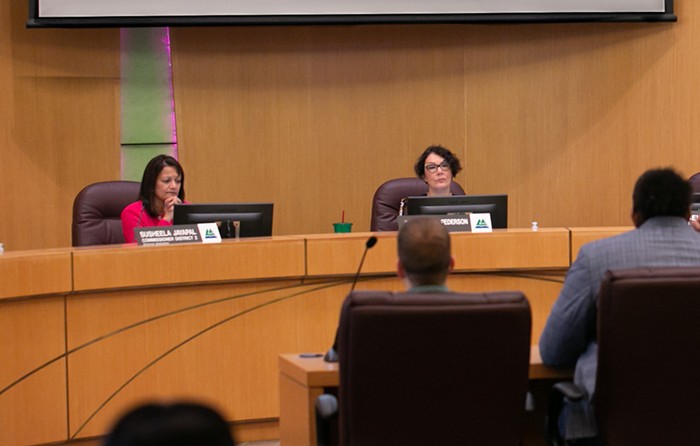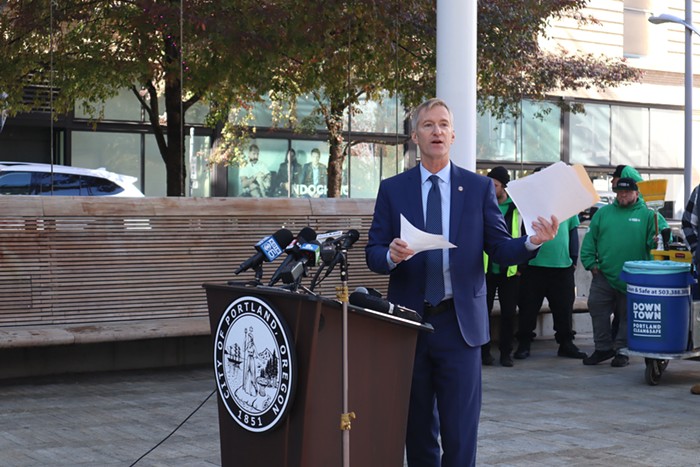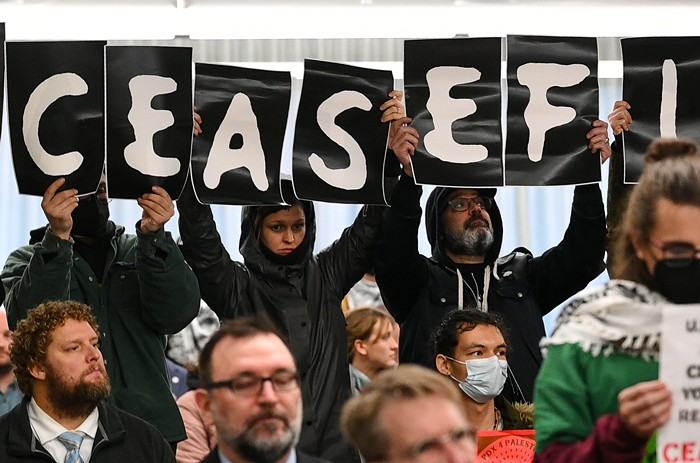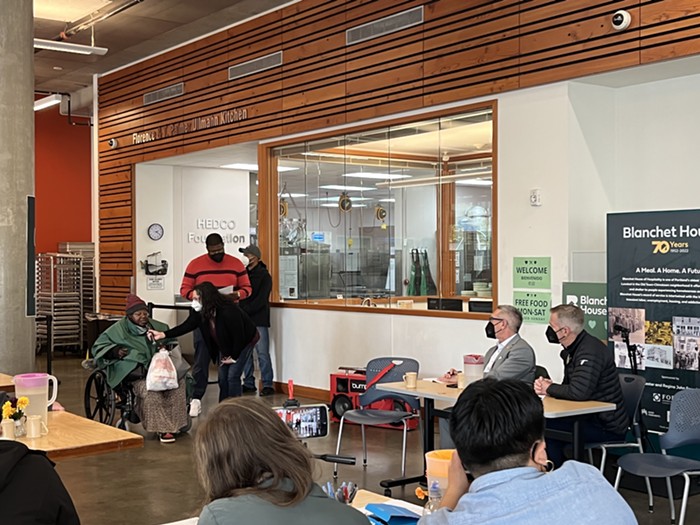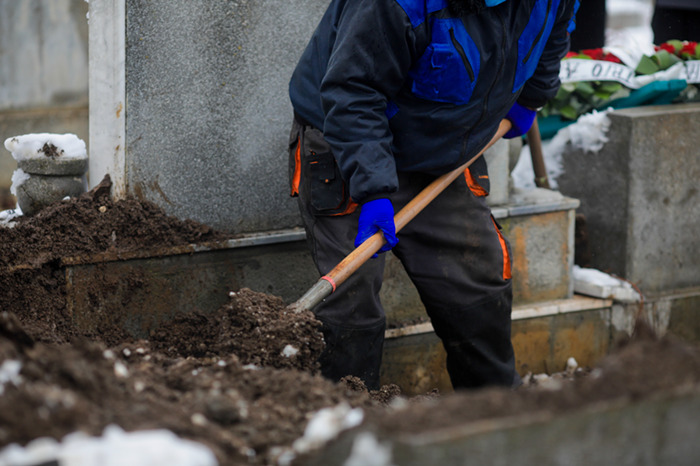DOUBLE-BREASTED CORMORANTS living on East Sand Island near the mouth of the Columbia River are being slaughtered—either blown away with shotguns or prevented from hatching—by the thousands, and Portland conservationists say they can prove the reason for killing these birds is based on a lie.
Claiming that the cormorants, a protected migratory species, eat millions of baby salmon, the US Fish and Wildlife Service (FWS) in April 2015 approved permits allowing the US Army Corps of Engineers to kill nearly 11,000 adults and destroy more than 26,000 nests—even as documents suggest that destruction yields no meaningful benefit for the fish it's supposed to protect.
Bob Sallinger, Conservation Director for the Audubon Society of Portland, released documents on August 12 showing the FWS' own scientists determined in March that "efforts to reduce cormorant predation on steelhead (e.g., culling) are expected to have no effect on Snake River steelhead population."
Sallinger shared an email with the Mercury in which Howard Schaller, a project leader with the FWS' Columbia River Fisheries Program Office, informed another official that the bird culling doesn't actually increase juvenile fish survival rates. The email cites an environmental impact study performed by a FWS fish biologist who concluded that killing cormorants merely leaves baby fish open to other predators. That study was never shared with the Corps of Engineers, Sallinger says.
The documents put a new spin on a months-long battle. In April, Audubon and other conservation groups filed a lawsuit in US District Court in Portland against the Corps of Engineers, FWS, and the US Department of Agriculture's Wildlife Services program, alleging dams are the real threat to salmon populations—and the agencies know it.
"These fish they're claiming killing the cormorants will save have already been through the dam and aren't expected to live to adulthood," Sallinger says. "The Fish and Wildlife Service failed to follow its own conduct standard by failing to share crucial information with the Corps of Engineers. We want them to investigate where this breakdown occurred."
Because of the ongoing litigation, spokespeople for the defendants chose to limit their comments on Sallinger's claims. Diana Fredlund, public affairs specialist at the Corps of Engineers' Portland office, did say "the environmental impact study has undergone a vigorous review process" and the department stands behind culling the cormorants.
In an internal email to government agencies partnering on the culling project, obtained by the Mercury, Fredlund outlined talking points about the impact study. The email addressed fish mortality in the dams, saying survival rates have "greatly increased," thanks to the Corps constructing bypass systems that keep babies away from dam turbines and help reroute the fish to deeper water where they're less susceptible to becoming lunch.
"The rate at which certain birds, including double-crested cormorants, prey on juvenile salmon and steelhead remains high," Fredlund says. "Consequently, the Corps is focused on decreasing that rate."
Sallinger says the agencies' refusal to directly address the dams as a major killer of juvenile fish isn't the only problem. He also takes issue with the Corps' refusal to allow anyone on East Sand Island. He says he finds it suspicious they're conducting the bird counts and culling "in secret," adding that cutting off the island to visitors calls into question the legitimacy of killings he describes as brutal.
As of August 13, the Corps reports killing 158 birds and spraying vegetable oil on 5,089 nests, which prevents eggs from hatching. The culling has temporarily stopped while the birds are in their nesting season in an effort to avoid killing adults that are currently raising babies, Fredlund says. She also says there is no secrecy in the process, and claims that closing the island protects the birds.
"With the nesting going on we're trying not to disturb the birds at all," she says. "We want to make sure they experience as little stress as possible."
When asked why the department is interested in protecting birds it's planning to kill, Fredlund says that it's important to let the babies reach an age when they no longer need their parents.
"We don't want to take an adult that's rearing a chick," she says. "There's still some egg oiling going on, but after the eggs that are going to hatch have hatched, and the chicks can fend for themselves, the culling will likely start again."

